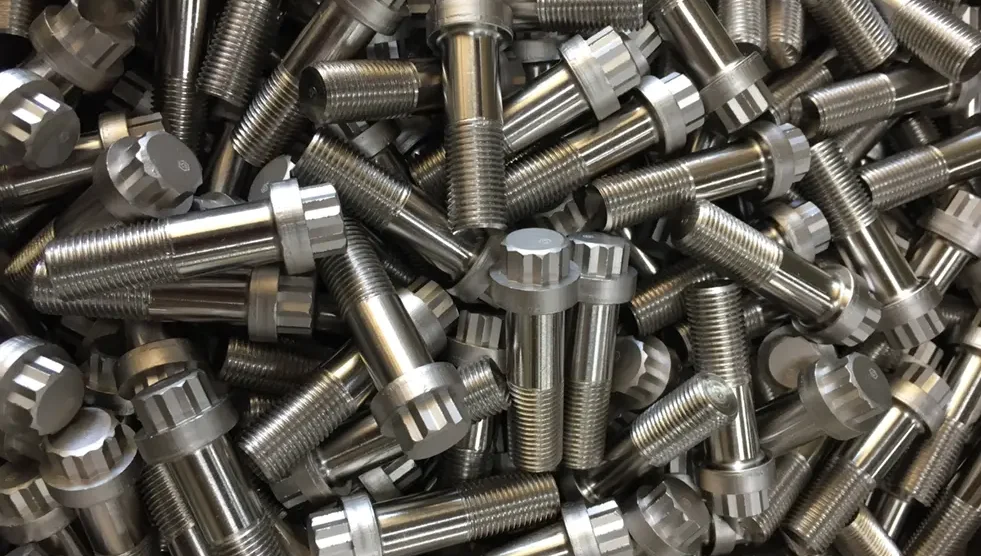Blogs

Corrosion and Wear Properties of Electroless Nickel–Phosphorus (Ni–P) Plating Layer on AZ91D Magnesium Alloy
A Thin Shield That Saves Millions
Imagine a high-performance automotive gearbox or aerospace housing made from AZ91D magnesium alloy — lightweight, strong, but with one fatal flaw: it corrodes faster than you can say oxidation. Now imagine a barely visible coating that not only shields it from corrosion but also makes it last years longer under friction and wear. That’s exactly what the Electroless Nickel–Phosphorus (Ni–P) plating layer does. And in industries where every gram of weight and every extra year of service life matters, this technology is a quiet game-changer.
What is Electroless Nickel–Phosphorus (Ni–P) Plating?
Full form: Ni–P = Nickel–Phosphorus.
Electroless Ni–P plating is an autocatalytic chemical process where a nickel-phosphorus alloy layer is deposited onto a surface without using electrical current. Instead, a chemical reducing agent (commonly sodium hypophosphite) drives the reaction, ensuring uniform coating thickness even on complex geometries.
For AZ91D magnesium alloy — a material prized for its high strength-to-weight ratio but prone to corrosion — Ni–P plating acts as a barrier layer that resists environmental attack and reduces wear from mechanical contact.
Why AZ91D Needs Ni–P Coating
- AZ91D magnesium alloy composition: ~9% Al, ~1% Zn, remainder Mg, plus trace Mn and Si.
- Magnesium alloys are susceptible to galvanic corrosion, especially in humid or saline environments.
- AZ91D is widely used in automotive parts, aerospace components, and electronics housings, but without protection, its lifespan is limited.
- Electroless Ni–P coating greatly enhances its corrosion resistance and mechanical durability.
Corrosion Properties
- High phosphorus Ni–P (>10 wt% P): Amorphous structure, excellent corrosion resistance in chloride-rich environments.
- Medium phosphorus Ni–P (5–9 wt% P): Balanced corrosion and wear resistance.
- Ni–P creates a dense, pore-free layer that blocks moisture and salts from reaching the magnesium substrate.
Salt spray tests have shown up to 10× l
- High phosphorus Ni–P (>10 wt% P): Amorphous structure, excellent corrosion resistance in chloride-rich environments.
- Medium phosphorus Ni–P (5–9 wt% P): Balanced corrosion and wear resistance.
- Ni–P creates a dense, pore-free layer that blocks moisture and salts from reaching the magnesium substrate.
Salt spray tests have shown up to 10× longer corrosion life for AZ91D with Ni–P coating compared to bare alloy.
Wear Resistance
- Ni–P plated layers have high hardness (500–700 HV as-deposited, can exceed 900 HV after heat treatment).
- Reduced friction coefficient compared to bare magnesium.
- Maintains wear resistance under dry sliding, lubricated, or abrasive conditions.
- Extends component lifespan in gear housings, connectors, engine parts.
Chemical Composition of Ni–P Coating
| Element | Typical Content (%) |
| Nickel (Ni) | 85–92 |
| Phosphorus (P) | 8–15 |
| Trace impurities | <0.5 |
Applications
Automotive: Used in transmission cases, steering components, and gearbox housings, where Ni–P plating prevents corrosion from road salts and reduces wear for extended service life.
Aerospace: Suitable for structural parts and electronic housings, combining lightweight strength with reliable environmental protection.
Electronics: Applied to heat sinks and EMI-shielded enclosures, maintaining conductivity and shielding performance in sensitive systems.
Marine: Ideal for pump housings and underwater casings, where Ni–P acts as a tough barrier against aggressive seawater corrosion.
Industrial Machinery: Protects molds, dies, and wear surfaces, enhancing lifespan in abrasive or high-load manufacturing environments.
Defence & Military: Used in precision weapon components, communication housings, and field equipment, where durability and resistance to extreme conditions are critical.
Standards
- ASTM B733: Standard for Autocatalytic Nickel–Phosphorus Coatings.
- ISO 4527: Electroless Nickel Deposition standards.
- AMS 2404: Aerospace specifications for Ni–P coatings
Key Properties
| Property | Value Range |
| Hardness (HV) | 500–700 (as-deposited) / up to 950 (heat-treated) |
| Coating Thickness | 5–50 μm |
| Corrosion Resistance | >1000 hours in salt spray (ASTM B117) |
| Wear Resistance | High, suitable for sliding contacts |
| Electrical Conductivity | Moderate |
| Thermal Stability | Up to 400°C |
Technical Specifications
- Uniform thickness, no need for electrical contact points during plating.
- Can coat complex shapes and internal surfaces.
- Excellent adhesion to AZ91D substrate after proper pre-treatment (zincate process).
Shapes Available with Ni–P Plating on AZ91D
- Plates, sheets, and panels
- Castings and die-cast parts
- Custom machined components
- Intricate housings and enclosures
Conclusion
At DOMADIA™, we believe in materials that don’t just perform — they outperform expectations. Electroless Nickel–Phosphorus (Ni–P) plating on AZ91D magnesium alloy is more than a coating; it’s a lifetime enhancer. By combining lightweight AZ91D with the superior corrosion and wear resistance of Ni–P, industries get the best of both worlds — efficiency and durability.
When weight reduction is critical and reliability is non-negotiable, DOMADIA™ Ni–P plated AZ91D stands as the smarter, longer-lasting choice.
Contact our experts today!
Talk to: Er.Pankaj Domadia | Kairav Domadia | Aadil Domadia | Pragati Sanap | Pooja N N
#NickelPhosphorus #NiPPlating #MagnesiumAlloy #AZ91D #CorrosionResistance #WearResistance #DOMADIA #EngineeringMaterials
